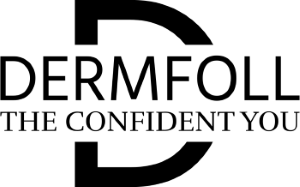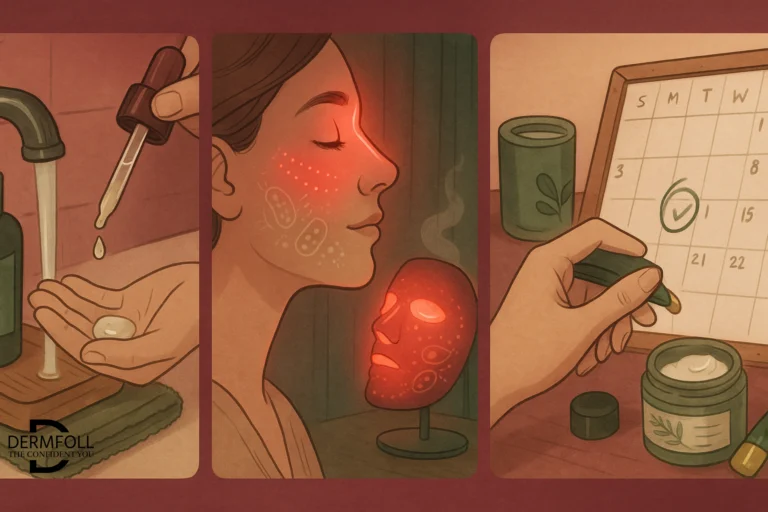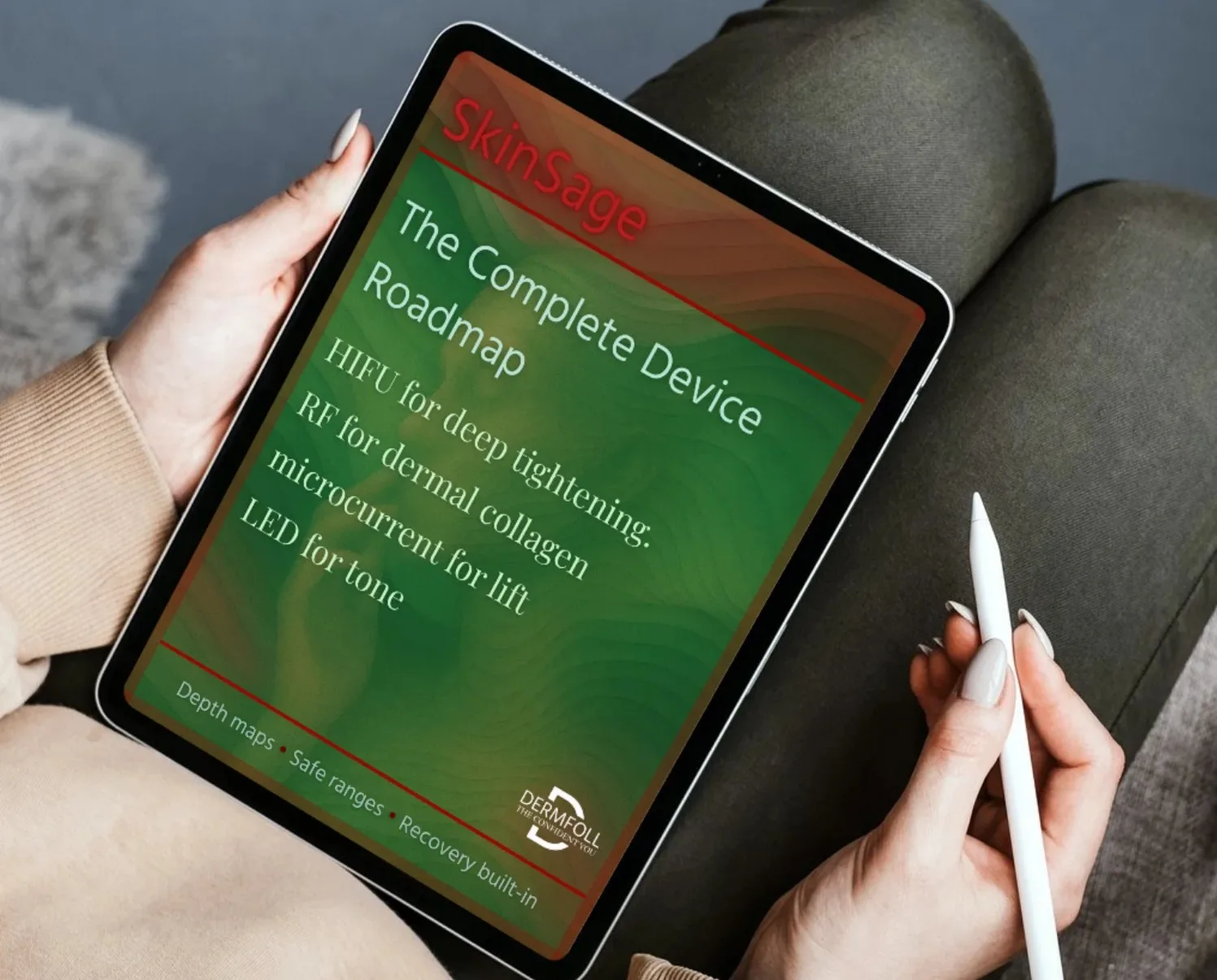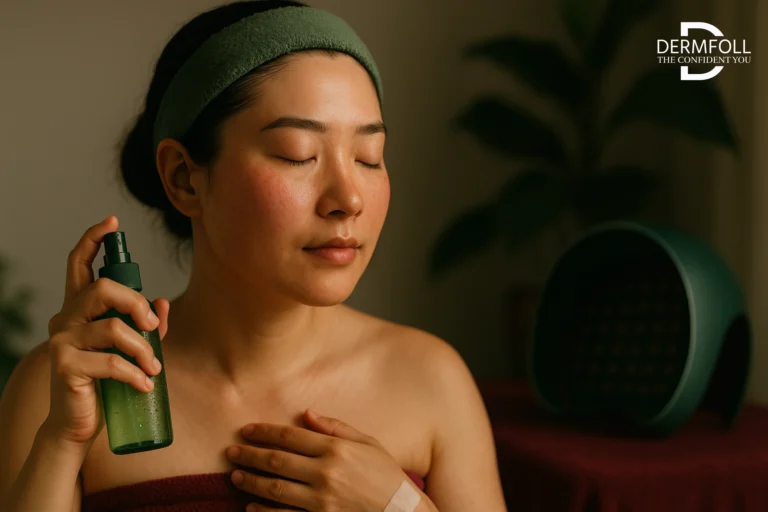Is Red Light Therapy Right for You? The Candid Truth
So, maybe you’ve been eyeing one of those light therapy devices for face – wondering if they’re worth it, or if your skin’s even the right fit for red light therapy.
I hear this all the time from friends alike. Let’s take a no-BS look at who actually benefits, who might want to pause, and why it’s not just “a white woman’s anti-aging device.”
🔶 Check out our top picks for finding out if red light therapy is worth it for your skin:
• SEAYEO LED Light Facial Beauty Device
• YAMAN Photo PLUS Prestige PRO
Who Sees the Best Results: Skin Types, Conditions, and Goals
Not everyone’s chasing the same glow. That’s why it’s important to match your expectations with what red light therapy is actually good at.
Here’s who tends to love it:
- Anyone with fine lines, dull texture, or uneven tone. Studies show red light stimulates collagen and improves circulation. If you’re noticing things aren’t as plump or radiant – this might be your sweet spot.
- Post-procedure skin, acne scarring, or barrier disruption? Red light calms and heals. It’s a gentle support tool, not an overnight miracle.
- Sensitive skin types? Yep, it’s usually well tolerated. Red light operates without heat, meaning minimal risk for irritation – though always patch test.
📖 One 2022 multicenter trial found that subjects with mild-to-moderate photodamage who used red light therapy 3x/week for 12 weeks reported a 31% increase in perceived skin radiance and a 29% reduction in wrinkle depth compared to baseline.
Health Flags and Precautions: When to Ask Your Dermatologist
Now, let’s say it clearly: LED isn’t for everyone, all the time.
Please talk to your derm first if:
- You’re taking photosensitizing medications (like doxycycline or Accutane)
- You have a history of melasma or hyperpigmentation that flares with light
- You’ve had recent skin cancer or are immunocompromised
- You wear injectables and are using at-home masks with high irradiance – timing matters!
This isn’t about fear-mongering – it’s about knowing when extra eyes on your skin can make a huge difference. Especially if you’re investing in a light therapy device for face with stronger settings.
Busting Red Light Myths by Skin Tone, Age & Gender
Let’s set something straight – red light therapy is for more than just women in their 40s trying to “fix” fine lines.
- Skin of color? Yes, red light can be beneficial! It doesn’t rely on pigment targeting like lasers do. so the risk of post-inflammatory pigmentation is lower. That said, those with melasma or active flare-ups should still proceed with caution.
- Guys? Also yes. You want fewer breakouts or better skin tone, and also want to redicing Scarring? Go for it.
- Teens to 70s? Absolutely – just tailor the protocol. Teens might use it for acne control, while older folks might chase collagen support.
📖 A 2023 review in the Journal of Cosmetic and Laser Therapy emphasized that red light therapy showed “comparable improvements in skin density and wrinkle depth across Fitzpatrick skin types I–V, with no increase in adverse pigmentation outcomes.”
Bottom line? This tech is inclusive, when used smartly. Whether you’re treating wrinkles, scars, or redness – or just trying to future-proof your skin – light therapy devices for face can be a valuable part of your toolkit.
How Often Is Red Light Therapy Recommended
It’s one thing to buy a light therapy device for face, but another to actually use it… consistently… correctly… and in a way that doesn’t leave you wondering, “Is this even working?”
If that’s you, you’re not alone. Let’s break down what matters most so red light becomes your go-to glow booster
🔶 Discover which red-light heroes deliver real results—no guesswork needed:
• SEAYEO LED Light Facial Beauty Device
• YAMAN Photo PLUS Prestige PRO
When, When, And How Long Should You Do Red Light Therapy For
First, how often should you get red light therapy? This depends on your goals and how strong your gadget is, but here’s a rough plan:
- At-home devices (lower intensity): 3–5 times a week is the sweet spot.
- In-office treatments (greater irradiance): 1–2 times weekly, depending on your provider’s regimen.
And how long should you do red light therapy for? Most sessions run 10–20 minutes. The idea is consistency, not intensity. Think of it like going to the gym – regular work brings actual effects.
One 12-week study demonstrated visible improvement in skin elasticity and fine wrinkles with just 10-minute sessions, 3x per week utilizing 633 nm red LED light.
💡 Pro tip: Use it after cleansing and before your serums or moisturizers. This way, nothing hinders the light, and you receive that deep cellular activation.
Pairing with Skincare: Ingredients That Boost or Block Light Benefits
Here’s where things get exciting (or dirty). Your products matter. Some substances boost results; others can utterly get in the way.
✅ Great to use before or after your red light session:
- Vitamin C (brightening and collagen-friendly)
- Peptides (help repair skin structure)
- Hyaluronic acid (hydrates and plumps)
⛔️ Best to avoid just before a session:
- Retinoids or AHAs/BHAs: They increase sensitivity and can make skin more reactive.
- Benzoyl peroxide: It can oxidize under light exposure.
If you’re layering skincare with your light therapy device for face, timing is everything. You can still use actives – just leave them for nighttime.
How to Protect Your Glow: What to Do After Each Session
Post-care doesn’t have to be too much – it just needs to be thoughtful. Here’s your quick checklist:
- Hydrate: Your skin just did a lot of work. Lock in moisture with a lightweight humectant or calming serum.
- Protect: Always apply broad-spectrum SPF if you’re using red light in the morning. Your skin might be slightly more photosensitive right after.
- Be consistent: Remember, how often red light therapy is recommended only works if you actually stick with it.
🧠 Consistent red light use over 4 to 8 weeks has been associated with measurable increases in collagen density and skin hydration – even with lower-powered home devices.
So no, you don’t need a 12-step routine. Just a little planning and a good understanding of how long you should do red light therapy for can make all the difference between “meh” and “wow.”
Want help mapping your device use to your specific skincare goals? Or wondering which actives are best for your skin type? Let me know – we can break it down together.
Quick Guide: How Often Is Red Light Therapy Recommended ?
| Use Case | Type of Device | Frequency | Session Duration | Results Start Showing |
|---|---|---|---|---|
| General anti-aging | At-home | 3–5x/week | 10–20 minutes | 4–6 weeks |
| Acne/inflammation | At-home | 4–5x/week | 10–15 minutes | 2–4 weeks |
| Skin texture & tone (radiance boost) | At-home or in-office | 3x/week | 10–20 minutes | 3–4 weeks |
| Post-procedure healing (under guidance) | In-office or prescription | 1–2x/week | 20 minutes | 2–3 sessions |
| Maintenance (after initial results) | At-home | 1–2x/week | 10–15 minutes | Ongoing |
Results Timeline: What You’ll See and When
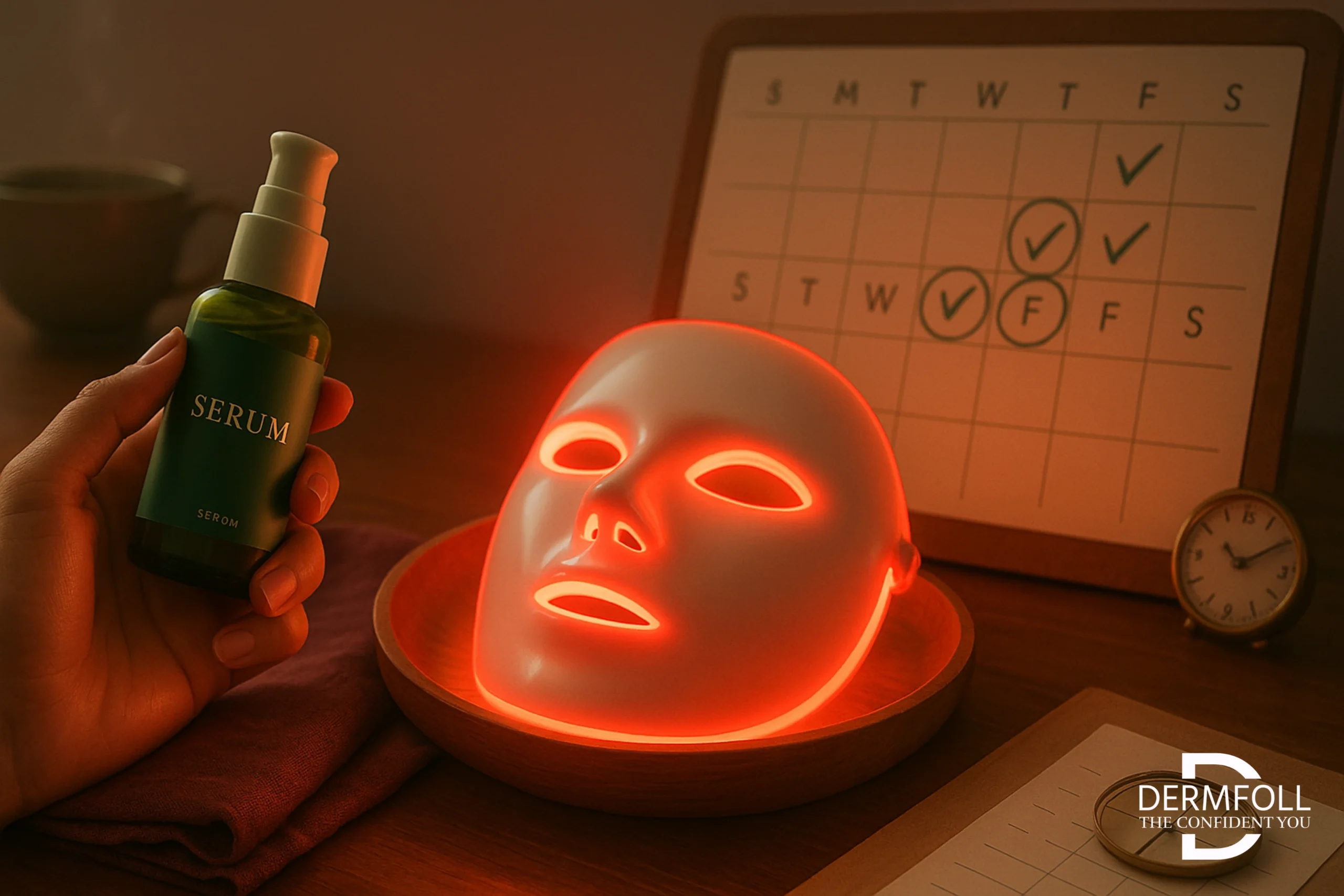
The First Few Weeks: Subtle Wins and What They Mean
Waiting for results isn’t exactly thrilling. But those early weeks? They matter more than you realize.
If you’re using light treatment devices for face consistently (we’re talking 3–5 times a week), you might notice tiny changes within 2–3 weeks. Things like:
- A slight softening of delicate lines
- Less redness after your typical skincare routine
- A bit extra bounce or smoothness when you touch your skin
It’s subtle, yes. But these modest triumphs are the first indicators that your skin’s mitochondria are waking up – generating more energy (ATP) and signaling repair.
🗣️ “Don’t mistake ‘nothing dramatic’ for ‘nothing’s happening.’ Cellular energy increases over time – it’s like charging a battery, not flipping a switch.”
Month-by-Month Progress: When Most People Notice a Shift
This is where the real magic starts to show. Around weeks 4 to 6, especially if you’ve remained with a rhythm (remember, how often is red light therapy recommended depending on your goals, but 3–5x weekly is the gold standard), people often start seeing:
- Clearer skin tone and less uneven texture
- Fewer active outbreaks
- Brighter, calmer skin overall
- Reduced fine wrinkles and enhanced stiffness (particularly around eyes/mouth)
By the 8-week period, several dermatologists report visible changes in general skin quality, including collagen remodeling.
Clinical studies show that how long you should do red light therapy for is usually 8–12 weeks to get full regenerative benefits, especially for aging or acne-prone skin.
📈 A 2021 controlled trial showed over 90% of participants experienced smoother skin and reduced redness after 8 weeks of consistent red light use.
Tweak the Timing: When It’s Time to Adjust Your Protocol
Here’s where listening to your skin really matters.
- Too little progress after 6 weeks? You might not be using your device often enough – or the irradiance (strength) could be too low.
- Seeing great results by week 10? Amazing! You can likely move into maintenance mode – 1–2 sessions a week to keep that glow going.
- Feeling more dry or reactive? Ease up to 2–3 sessions weekly and layer on more hydration.
Red light therapy isn’t one-size-fits-all. Think of it like a skincare routine – it evolves with your skin. You’re not failing by adjusting your approach; you’re fine-tuning your flow.
✨ The sweet spot? Regular use, clear tracking (even a selfie log can help), and grace if your journey takes a little longer.
CONCLUSION
- Red light is backed by studies showing boosts in collagen, skin healing, and tone.
- It’s not one-size-fits-all, but it is surprisingly versatile: from teens with acne to folks in their 60s looking for firmness.
- How often is red light therapy recommended? Around 3–5x a week for at-home use. Think consistency over intensity.
- How long should you do red light therapy for? 10–20 minutes per session, and give it 6–8 weeks before judging results.
- And finally – skin tone, age, or gender doesn’t limit your glow-up. This tech is inclusive when used smartly.
🔶 Ready to see if red light devices for face live up to the hype? Start here:
• SEAYEO LED Light Facial Beauty Device
• YAMAN Photo PLUS Prestige PRO
💬 What’s Next?
You’ve got the facts. But what about the fiction?
Up next: Red Light Therapy: Busting the Biggest Myths, where we unpack everything from “Does it thin your skin?” to “Is it just a scam in a cute mask?”
